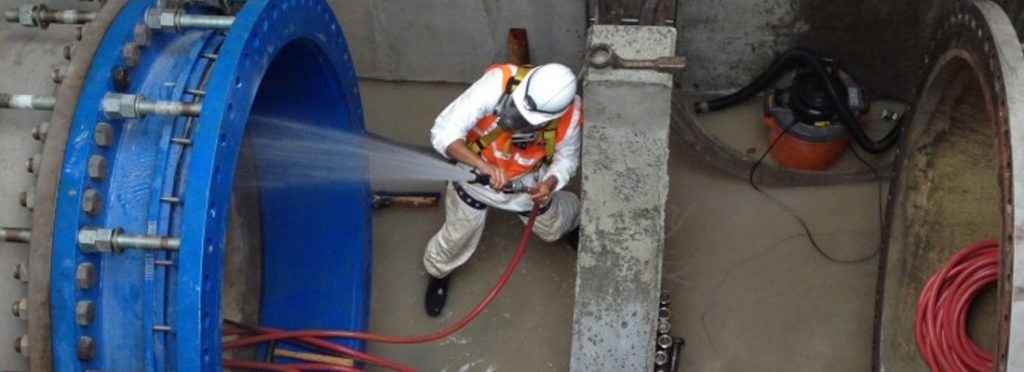Sanitizing pipes and distribution systems in new residential and commercial areas is a must as it helps kill bacteria. Disinfecting new systems is crucial especially if servicing has been performed recently.
It is why Shock Chlorinating water (an effective method to remove impurities), is becoming incredibly popular.
Chlorine has strong germicidal properties, which removes slime, bacteria, and other germs built up in the water. You can also get rid of other problems like algae using the same method.
Disinfecting Pipes & Distribution Systems: Why is it Important?
Disinfecting water is becoming increasingly important for sanitization pipes and distribution systems because it delivers water to a huge population.
There is always a threat of microbial growth in the distribution network, which can impact human health greatly.
Let us discuss some important factors that are making sanitizing pipes and distribution systems more crucial.
Bio Fouling
Biofouling refers to the accumulation of bacteria, microorganisms, and other harmful elements in areas where they shouldn’t exist. Following are some of the most common places where you might find bio fueling.
- Ship and submarine hulls
- Water inlets
- Pipework
- Grates
- Ponds
- Rivers
The biofouling makes these pipes lose their integrity, impacting their original purpose. This can also pose a threat to human health, and impact the quality of water people get through these distribution networks.
The biofilm created through the fouling traps nutrients, water-borne pathogens, and microbes in a nearly impenetrable material. The organism starts creating multiple layers right after sticking itself to the pipe walls. This buildup is more likely near corroded pipelines, as they are easily penetrable.
Where does the Bio Fouling Build Up begin?
While the biofouling can begin almost anywhere in the pipe, it usually begins where the pipe is new. This occurs because different elements can become a part of the pipe during the construction process. Following are some of the most common ones you should keep in mind.
- Bacteria from workers
- Dirt
- Environmental impurities
- Foreign material
- Piping construction materials
Contamination can also happen when professionals try to repair the pipes or service them for general maintenance.
Bio Fouling Build up: What can you do?
Precautions are the most important element to consider while repairing or servicing pipes. While members need to take care of basic hygiene while working, cleaning and sanitizing the distribution network after service matters too.
This means that professionals should clean out the pipes in and out once the maintenance work completes. The easiest way is to ensure thorough bleach cleaning inside the pipes to remove biofilm from the biofouling, bacteria, and other harmful microorganisms.
It also reduces the build-up inside the pipes. Let us talk about the benefits and the right method to do this.
Advantages of Sanitizing Pipes and Distribution Systems
Following are the top advantages of sanitizing pipes and distribution after repair and servicing projects.
- Cleans piping and equipment
- Helps prevent biofilm formation
- Removes dirt and debris
- Removes disease bacteria
Shock-Chlorination Procedure
Following are the most crucial steps for the shock chlorination procedure you should keep in mind.
Choose the right Dosage for Chlorine
A balanced chlorine dose is important, because an excess amount is poisonous, whereas, a smaller amount is effective against microbial. As a general rule of thumb, a dosage of 50 to 200 ppm of free chlorine should be distributed throughout the pipes and distribution networks.
Test the Residuals
While the chlorine treatment removes most impurities, you should still test the pipes for residue. Thus, testing will help you determine if the fixtures and hose bib or valve sections need more treatment. There is nothing to do more if the pipelines are fully decontaminated.
Leave the Pipes Undisturbed
It is important to let the chlorine do its job once you treat it inside the pipe. Remember, that you should keep the pipes and distribution networks undisturbed for 12-hours after the treatment at least. You can retest the pipes after these 12 hours to test if the pipe needs further treatment.
Shock-Chlorination Using the “Slug-In Method”
While the slug-in method is unconventional and not recommended for most users, it can still be a handy option in some cases. It involves introducing a large amount of powdered or tablet chlorine into the pipelines to clean it out. The method uses a concentrated amount and removes most bacteria found in the sections.
However, this method doesn’t include an evenly distributed chlorine amount through the pipe distribution network. There is a chlorine residue of around 50 to 200 pmm on average.
Bottom Line
Sanitizing pipes and distribution systems is a good option to clean them. However, expert advice is a must if you expect it to work efficiently without corroding your pipes. For more information, we suggest you consult with us at MattChlor, and our experts will help you with the whole process in no time.



